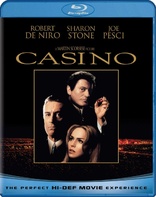Casino Blu-ray Movie
HomeCasino Blu-ray Movie 
Universal Studios | 1995 | 178 min | Rated R | Oct 14, 2008Movie rating
8.4 | / 10 |
Blu-ray rating
| Users | 4.4 | |
| Reviewer | 4.5 | |
| Overall | 4.4 |
Overview
Casino (1995)
In early 1970s Las Vegas, low-level mobster Sam “Ace” Rothstein gets tapped by his bosses to head the Tangiers Casino. At first, he’s a great success in the job, but over the years, problems with his loose-cannon enforcer Nicky Santoro, his ex-hustler wife Ginger, her con artist ex Lester Diamond, and a handful of corrupt politicians put Sam in ever-increasing danger.
Starring: Robert De Niro, Sharon Stone, Joe Pesci, James Woods, Don RicklesNarrator: Robert De Niro, Joe Pesci, Frank Vincent
Director: Martin Scorsese
| Crime | Uncertain |
| Drama | Uncertain |
| Period | Uncertain |
| Epic | Uncertain |
| Melodrama | Uncertain |
Specifications
Video
Video codec: VC-1
Video resolution: 1080p
Aspect ratio: 2.35:1
Original aspect ratio: 2.39:1
Audio
English: DTS-HD Master Audio 5.1 (48kHz, 24-bit)
Spanish: DTS 5.1
French (Canada): DTS 5.1
German: DTS 5.1
Spanish: DTS 5.1
Italian: DTS 5.1
Japanese: DTS 5.1
Subtitles
English SDH, French, German, Italian, Japanese, Portuguese, Spanish, Danish, Dutch, Finnish, Korean, Mandarin (Traditional), Norwegian, Swedish
Discs
50GB Blu-ray Disc
Single disc (1 BD)
Bonus View (PiP)
Playback
Region free
Review
Rating summary
| Movie | 5.0 | |
| Video | 4.5 | |
| Audio | 4.0 | |
| Extras | 3.0 | |
| Overall | 4.5 |
Casino Blu-ray Movie Review
Universal's 1080p production of the Scorsese classic is a treat for the eyes.
Reviewed by Greg Maltz October 12, 2008There is simply no better tandem in film history than Martin Scorsese and Robert De Niro. The buzz about GoodFellas was still going strong when Scorsese finished a mafia classic based on yet another Nicholas Pileggi book and featuring many of the same actors as the earlier film. Casino is the story of the rise and fall of the Tangiers, which was bankrolled by mob bosses and managed by sports handicapper and Vegas innovator Frank "Lefty" Rosenthal. The film renames him Sam "Ace" Rothstein, with De Niro in the lead role. Joe Pesci plays a similar character to his trademark performance in GoodFellas. In Casino, that character is Anthony Spilotro, who was renamed Nicky Santoro. The similarities in genre and cast force unavoidable comparisons between the two Scorsese classics. Since GoodFellas came first and told a much simpler story about mob loyalty, it is often credited as the better film. But Casino is superior in many ways that are rarely acknowledged. The scope of the story is more epic and powerful; the acting and narration are better than Ray Liotta's performance in the earlier film; lighting and camerawork are more innovative and artistic, the editing is executed more brilliantly by longtime Scorsese associate Thelma Schoonmaker; and the wardrobe, sets and landscapes are more impressive in Casino. The soundtrack is more varied, too. All of these advantages are paid off on Universal's new Blu-ray release.
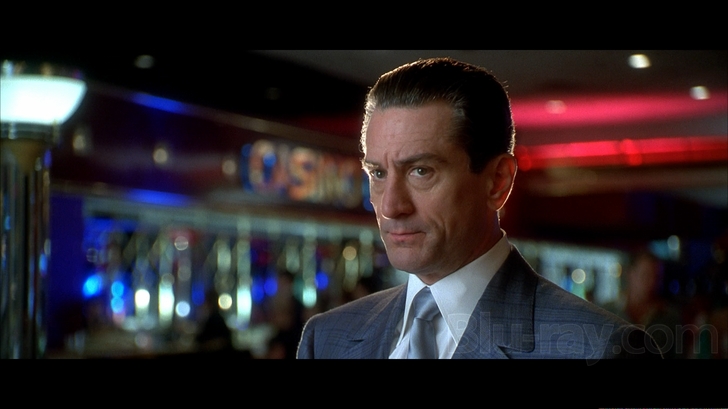
Sam "Ace" Rothstein (Robert De Niro) surveys the floor at the Tangiers casino in Las Vegas.
Casino follows GoodFellas' formula of showing a defining moment of the story before the opening credits roll. In this case, we see Ace walk to his car, get in and turn the ignition. The car catches fire and explodes as De Niro's narration reveals that Ace once gave someone the key to everything he owned and he thought he had the kind of love that supported that trust. This dramatic opening segues into the credits that appear over kaleidoscopic Vegas lights with the form of Ace's body tumbling through the air. The narration--a tag-team tour de force between De Niro and Pesci--explains how Ace and Nicky came to Vegas after establishing their reputations back home, and how the mob bosses bankrolled the Tangiers. Through the introductory segments of the film, the camera never stops moving. De Niro and Pesci share narration duties and their voices lend clarity and authenticity to the plot. Pesci in particular adopts a flawless Chicago accent and never breaks character. His performance is gripping in its volatility, just as De Niro's is masterful in its restraint. The supporting cast, including Sharon Stone, Don Rickles and James Woods, turn in excellent performances as well. Altogether, Scorsese delivers an epic story of the rise and fall of a Vegas casino with the parallel arcs of Ace's relationship with Nicky and Ginger (Stone), and many brilliant subplots--especially the conflicts arising from Ace's perfectionism versus local Vegas etiquette.
Going back to the comparison to GoodFellas, the earlier film featured exceptional camerawork, not the least of which was one of the most impressive, unbroken shots in film history through the bowels of the Copacabana. But overall, the cinematography in Casino is on a higher level of sophistication and aesthetic conception. This is partially due to the inclusion of cinematographer Robert Richardson, who worked with Oliver Stone on several films, including The Doors and Born on the Fourth of July and went on to collaborate with Scorsese on Bringing Out the Dead and The Aviator. Together, Scorsese and Richardson implemented many innovations in Casino, including spot lighting to make areas glow on screen. This approach is often used during indoor scenes when two characters are sitting at a table. A Scorsese trademark is his actors' stylized gesticulation, especially for characters with positions of power in the mafia. With the glow effect, these hand motions are highlighted dramatically, as the spotlighting causes the actors' hands to actually glow in the bottom part of the screen. Even smoke rising slowly in a bar becomes a living, glowing entity. Scorsese and Richardson also used sweeping shots inside the casino and out, even through the air high above the desert and city of Las Vegas, not totally unlike Richardson's brilliant work in the desert scene of The Doors. The film even serves up a superb shot of Nicky's car reflected in De Niro's sunglasses as it drives across the Nevada desert, kicking up fine sand in its wake. Overall, Casino presents a pinnacle of visual stimulation and artistry, and the Blu-ray captures it gorgeously, with film-like resolution.
Casino Blu-ray Movie, Video Quality 
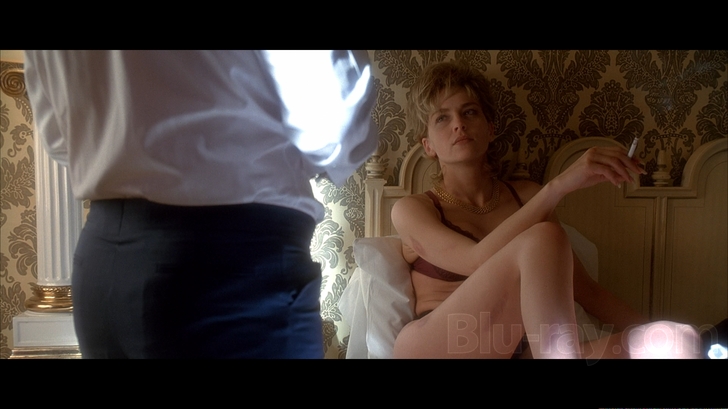
The transfer to 1080p is superb, with rich colors, fine detail and film-like resolution. There may be some digital noise reduction applied to dark areas but this does not adversely impact black level or create pixelation. For the most part, grain and film anomalies are visible (more in the daylight shots than dark scenes, which adds to the suspicion of selective DNR use). But the approach allows much of the original source material to transfer perfectly to Blu-ray. Skin color is spot-on. The textures and colors of the '70s era wardrobe and flashing lights of Vegas appear colorful and vibrant. Facial expressions and landscapes are characterized by ultrarealistic definition.
Watch the scene showing the desert meeting between Ace and Nicky, which Nicky calls after Ace suggests to the bosses back home that Nicky should lay low. The detail and depth is fantastic, showing geologic striations in the distant mountains and remarkable definition in the desert shrubbery. The visual impact of this scene is rarely achieved in the history of motion picture. Cinematographer Richardson clearly has an affinity for dramatic desert footage. He also made Oliver Stone's vision come to life in the desert scene of The Doors. Even beyond microdetail in the picture, the macrodetail--color, lighting and framing--is executed with the touch of a master painter. Watch the aerial shot following Nicky's car as it races toward the meeting destination. The motion and sand particulate is smooth and despite the brightness of the scene, no area of the picture is blown out. The racing car is even captured in a close-up reflection in Ace's sunglasses as it leaves a trail of dust across the desert. Scorsese and Richardson sought to make the clouds of sand a visual element of the scene and it works to perfection. As Nicky storms back to his car and pulls a u-turn, he gooses the wheels as he speeds off, sending a small dust storm slowly settling over Ace.
A similar approach is used in many dark, indoor scenes, where cigarette smoke becomes a glowing, vibrant entity in the picture. Watch the bar scene early in the film, where Nicky reacts violently to a man who insults Ace. The lighting and use of slow-motion is as dramatic as the action. Spot lighting is used to make the smoke glow and highlight its shifting forms and evanescence. After the slow motion is applied in postproduction, the smoke takes on an even more ominous quality. Scorsese uses this visual filter to alter the tone of the scene and lend more impact to an already powerhouse performance by his actors. It comes off with a foreboding, noirish quality. In fact, most of the indoor shots have a film noir quality and make use of dramatic lighting. Another example of this is the spot lighting used on hands and tables as the characters sit and talk. Watch the meeting between Nicky's sidekick Frankie (Frank Vincent) and mob boss Remo Gaggi (Pasquale Cajano). Remo's hands are glowing white as he motions during the conversation. The effect adds artistry and balance to the picture, and is reproduced with stunning resolution on Blu-ray.
Casino Blu-ray Movie, Audio Quality 
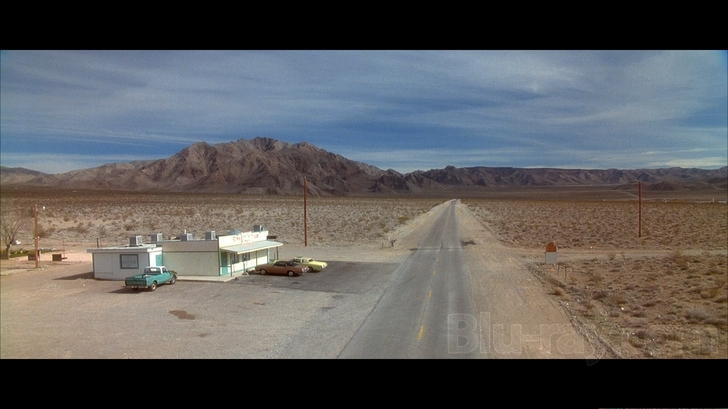
The most impressive audio feature of Casino is its soundtrack. From the Georges Delerue theme to blues legends B.B. King and Muddy Waters to pop radio staples Fleetwood Mac, the Rolling Stones and Roxy Music to jazz powerhouses Ramsey Lewis, Eddie Harris and Les McCann, the music is mostly high energy and almost nonstop. Casino boasts yet another DTS-HD Master Audio encode and these consistently sound bloated in the treble. The audio is not bad by any analysis, but it's not a faithful reproduction of the source material. Still, vocals, guitar, bass and drums are solid and anchored across the front three channels. The surrounds are used sparingly for reverb or echo effects. Gunshots and explosions are underwhelming, but other sound effects like car engines and planes are a bit more convincing. Dialog sounds crisp, with good faithfulness to the timbre of the actors' voices.
The LFE channel is also used sparingly, except during Scorsese's trademark camera bulb-popping scenes, meant to symbolize the harsh eye of public scrutiny. Watch the scene where Ace is inducted into the Las Vegas Country Club. Each pop of the vintage camera light bulbs yields a succinct blast from the subwoofer to deliver more impact, as if the photos are physically hitting Ace like a fist or bat. The bass is fairly tight during this scene, but may vary from system to system. The effect will not sound good on systems with loose or boomy bass. The same effect is used during Ace's wedding reception. It's worth noting that Scorsese uses the dramatic bulb-popping effect in several other films, including King of Comedy and Raging Bull. While the LFE channel is impressively used for the effect, it sounds anemic elsewhere in the soundtrack where it should be more prominent, particularly in explosions.
Casino Blu-ray Movie, Special Features and Extras 
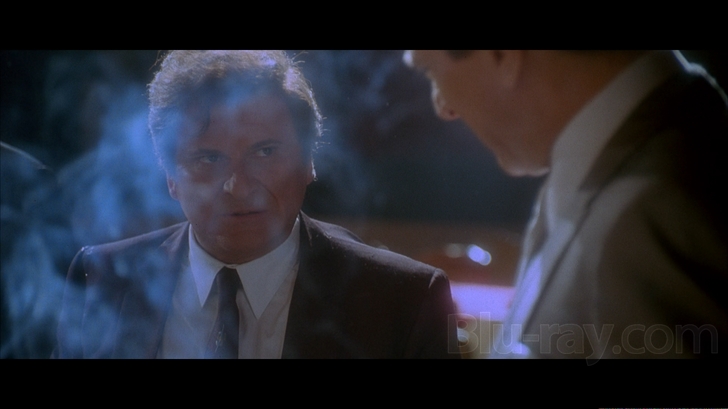
The Blu-ray disc delivers a range of special features, but unfortunately they're all in standard definition and Dolby Digital 2.0, ported over from the DVD version. The good news is that the bonus content has been produced for picture-in-picture and what Universal calls "U-Control". This interactive feature allows you to collect your own movie clips and make bookmarks. The disc also features "BD-Live" and Universal encourages viewers to register online to create a buddy list and access deleted scenes, featurettes and other extras that the studio says are available only to members. However, anyone with the Casino Blu-ray will have access to these deleted scenes and featurettes because they are included on the disc. The picture-in-picture content features four segments that are must-see documentaries for fans of the film.
Casino: The Story (8 min)
The Cast and Characters (22 min)
The Look (17 min)
After the Filming (9 min)
While these PIP features seem at least somewhat fresh in its new guise, despite being produced long ago, the content ported over from the DVD is by now very familiar. It includes:
Moments with Martin Scorsese, Sharon Stone and Nicholas Pileggi is actually the audio commentary track consisting of chopped-up snippets from the other bonus material.
Vegas and the Mob is an NBC documentary that can best be described as fluff and is of almost zero interest to Scorsese fans.
History Alive: True Crime Authors--Casino With Nicholas Pileggi is an A&E documentary clocking in at 43 min. It features silly, dramatized crime stories based on Pileggi's research and focuses on the author's association with the Henry Hill character from GoodFellas.
Deleted Scenes are by now well known, and there is only five minutes worth of material.
Casino Blu-ray Movie, Overall Score and Recommendation 
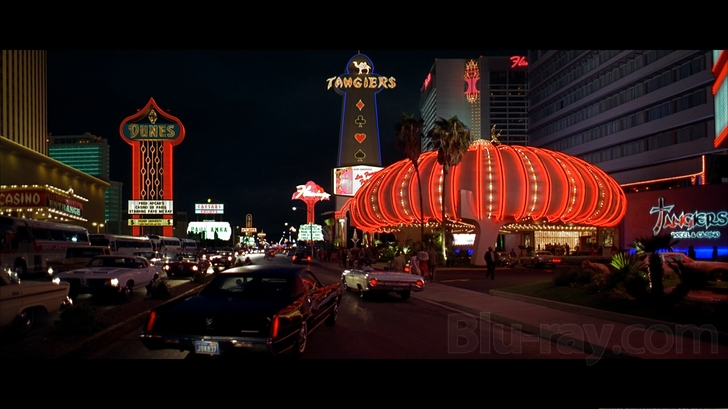
When it came time to decide which high resolution format to adopt, HD DVD boasted a couple Universal titles of interest that were not on Blu-ray. Casino was one of them. Thankfully, Universal corrected that problem and now that HD DVD is dead, the Blu-ray is the only version that lets us enjoy the fantastic Las Vegas cinematography of Richardson and vision of Scorsese in 1080p. Frames from many scenes of this movie can be hung on your wall as a work of art. The composition and picture quality are that good. So is the acting and story. Why then does Casino remain overshadowed by GoodFellas? The main reason I can think of is the earlier release date and the simpler concept that enabled viewers to more quickly latch on to the plot. But Casino is a bigger, ballsier, brassier production all around. The Blu-ray of Casino shows better and brighter, with a more dynamic picture and a high definition audio track. In comparison, the GoodFellas Blu-ray is more subdued and not as good a disc to show off your system. My one complaint about Universal's approach (since this is the first domestic title I am reviewing from the Johnny-come-lately studio) is the menu sequence. It features large areas of the screen with boring metallic artwork, showing standard definition video in the center of the screen. Worse, the music track in the menu has nothing to do with Casino or its soundtrack! What was Universal's home video production group smoking when it slapped this menu together? Though it's a travesty, it's a small price to pay for having access to one of the greatest films of the 1990s on BD.
Other editions
Casino: Other Editions

Casino
Universal 100th Anniversary
1995

Casino
1990s Best of the Decade
1995

Casino
Limited Edition | Iconic Art
1995

Casino 4K
1995

Casino 4K
1995

Casino
Remastered Edition
1995

Casino 4K
30th Anniversary Limited Edition
1995
Similar titles
Similar titles you might also like

The Godfather: Part II 4K
1974

The Godfather: Part III
1990

The Godfather 4K
1972

GoodFellas
1990

There Will Be Blood
2007

Once Upon a Time in America
Extended Director's Cut
1984

Boardwalk Empire: The Complete Fifth Season
2014

Scarface 4K
Gold Edition
1983

The Wolf of Wall Street 4K
2013

Carlito's Way 4K
1993

Live by Night
2016

The Irishman
2019

City of God
Cidade de Deus
2002

Wall Street
1987

American Hustle 4K
10th Anniversary
2013

Donnie Brasco
Theatrical Edition
1997

American Gangster 4K
2007

Lawless
2012

Black Mass
2015

Road to Perdition
2002
